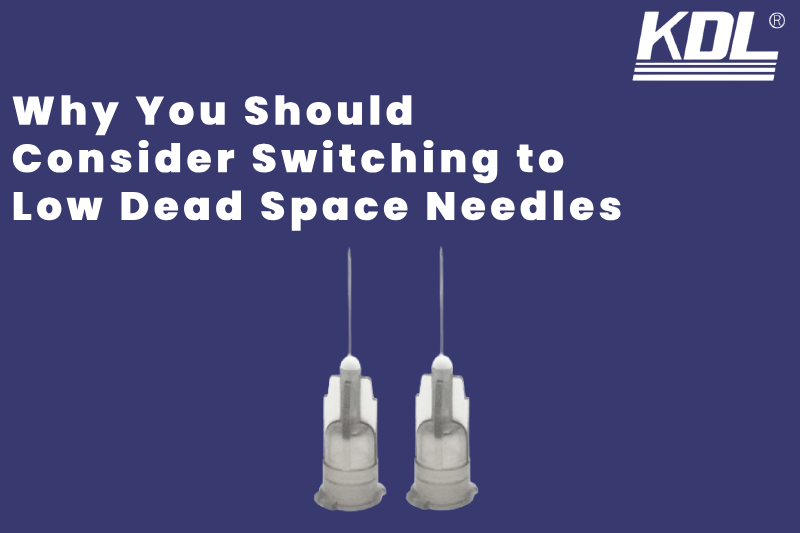
Are you tired of dealing with messy injections and wasted medication? It may be time to consider making the switch to low dead space needles. In this blog post, we will explore the benefits of low dead space needle and why they are becoming increasingly popular among healthcare professionals.
What Exactly is Dead Space?
Dead space refers to the space within a needle or syringe where medication can get trapped and go to waste. Traditional needles have a larger dead space, leading to inaccurate dosing and potential medication waste. Low dead space needle aim to minimize this wasted space, providing a more efficient and effective injection experience.
What are Low Dead Space Injection Needle?
First off, let’s talk about what exactly low dead space needle are. These innovative needles are designed with a minimal amount of space between the needle and the syringe, reducing the amount of medication that gets trapped and wasted. This means more accurate dosing and less medication left behind in the needle.
Benefits of Low Dead Space Needle
So, why should you consider switching to low dead space needle? Well, for starters, they can improve injection practices by ensuring that patients receive the full dose of medication every time. This can lead to better treatment outcomes and reduced risk of infection or contamination.
Low dead space needle offer several benefits, especially in healthcare where precision and safety are paramount
- Reduced Medication Waste: Low dead space needle minimize the amount of medication left in the needle hub after administration. This can be particularly significant with expensive or critical medications, reducing waste and potentially saving costs.
- Lower Risk of Cross-Contamination: With less residual fluid left in the needle, the risk of cross-contamination between patients is reduce. This is particularly important in settings where needles are reuse or when dealing with infectious diseases.
- Improved Accuracy in Dosage: Dead space in needles can hold a small amount of medication, affecting the accuracy of dosage delivery. Low dead space needle ensure that the intended dose is administered more accurately, which is crucial in treatments where precise dosing is required.
- Enhanced Safety for Healthcare Workers: Reduced dead space means less exposure to blood or bodily fluids for healthcare workers during needle handling and disposal. This can help minimize the risk of accidental needlestick injuries and potential exposure to bloodborne pathogens.
- Better Patient Experience: Zero dead space needles can contribute to a more comfortable injection experience for patients, as they may experience less pain and bruising due to more accurate delivery of medication.
- Compliance with Needle Exchange Programs: In harm reduction programs such as needle exchange initiatives for intravenous users, zero dead space needles are prefer due to their reduced risk of transmitting bloodborne infections between users.
- Environmental Impact: Minimizing medication waste not only saves costs but also reduces the environmental impact associated with the disposal of unused medications. This aligns with sustainability goals in healthcare.
How Low Dead Space Needles Can Improve Injection Practice
Low waste injection devices are also easier to handle and use, making them a preferred choice among healthcare professionals. Their design allows for more precise injections, reducing the risk of needle stick injuries and other complications. Additionally, they can help reduce medication waste, saving both time and resources in the long run.
Read More : The Ultimate Guide to IV Catheter Needle-Pen Type
Environmental Impact
In addition to their practical benefits, low dead space needles also have a positive environmental impact. By reducing medication waste, these needles help minimize the amount of pharmaceuticals that end up in landfills or waterways. This can contribute to a healthier and more sustainable healthcare system.
Cost-Effectiveness
Despite their many advantages, some may be concerned about the cost of switching to low dead space needles. However, the long-term benefits of these needles far outweigh the initial investment. By reducing medication waste and improving injection practices, low dead space needles can ultimately save money for healthcare facilities and providers.
Conclusion: Making the Switch to Low Dead Space Needle
In conclusion, low dead space needles offer a range of benefits that can improve injection practices, reduce medication waste, and promote a more sustainable healthcare system. If you are looking to enhance your practice and provide the best possible care for your patients, consider making the switch to low dead space needles today. Your patients and the environment will thank you for it!

